Przewalski’s Horse (Equus ferus przewalskii) is a horse species native to Central Asia. It is a horse that is large herbivores that live in huge herds and eat plant material, such as grasses and herbs.
- Status: Critically Endangered
- Known as: Przewalski’s Horse, Dzungarian horse, Asian wild horse, Mongolian wild horse, Przewalski’s wild horse.
- Estimated numbers left in the wild: Slightly more than 300.
This horse was once the most common wild horse of the steppes of Central Asia but is now one of the world’s rarest animals with an estimated population of about 2000 Przewalski’s Horses remaining in the wild.
They are considered endangered because they face dangers like disease and habitat destruction that can kill off entire herds.
But there are many reasons why these horses have dwindled in numbers, and why they are still considered endangered.
One of the biggest dangers to this species is disease. In particular, they are susceptible to Equine Herpes Virus (EHV), a virus that can cause severe respiratory problems, neurological damage, and death.
They can also contract other diseases, such as Bronchitis and Rhinopneumonitis (inflammation of the nasal passages).
Description
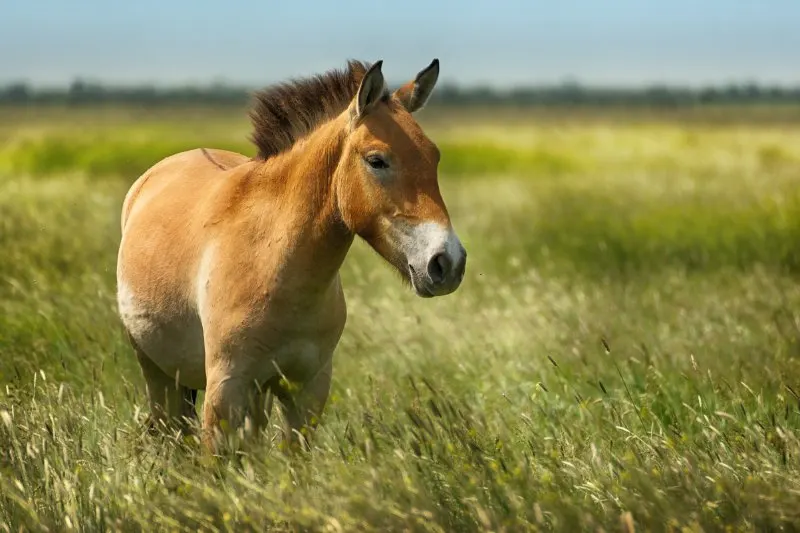
The horse species stands out among the wild horses of the world because it is a truly wild species and not simply a strain of domesticated horses and domesticated animals in a feral state.
Przewalski’s Horse has never been successfully domesticated and, in fact, has always exhibited a stubborn streak that has made it difficult to train. The horse is also a very social animal and lives in stable family groups of two to fifteen members.
These groups are led by a dominant stallion, who mates with all the females in the group, while the other males remain, bachelors, till they are able to challenge and displace a dominant stallion. It is considered endangered because it faces dangers like disease and habitat destruction that can kill off entire herds.
Przewalski’s horse is considered endangered and is in the Przewalski family, which consists of only 10 other horses in the wild. These horses live in large groups and are grazers that mainly feed on plant material such as grasses and herbs.
Anatomy and Appearance
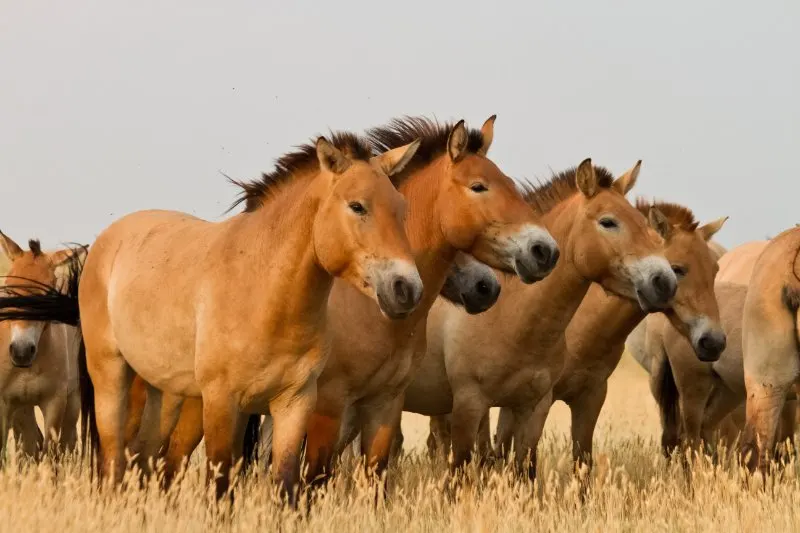
They are reddish-brown in color, with a black mane, tail, and forelegs. It is a horse that is smaller than the domestic horse.
They have a stocky build and are about the size of a pony.
Wild Przewalski’s Horses have long necks and heads, with small ears. They have two gaits – a walk and a trot. They are able to swim well and often cross rivers to get to new grazing areas.
Small and shaggy, this equine stands 1.2 to 1.4 meters tall, weighs between 200 and 340 kilograms, and is easily distinguished by its stiff, dark, upright dark brown mane, which stands erect like a Roman centurion’s crest. The color of these horses is greyish brown to tan, while each leg has a darker sock.
Name
The Russian geographer and explorer Professor Nikolai Przhevalsky introduced the species to European scientific knowledge in 1878.
Przewalski got the skin and skull of the horse from an English hunter near the modern-day Chinese and Mongolian border.
Previously recorded evidence consists of engravings in rocks and objects from 20,000 BCE and a written account of horses from a Tibetan monk Bodowa at around 900 CE. On a purely archaeological level, the horse is believed to have been buried in the wilderness in the t.
Location
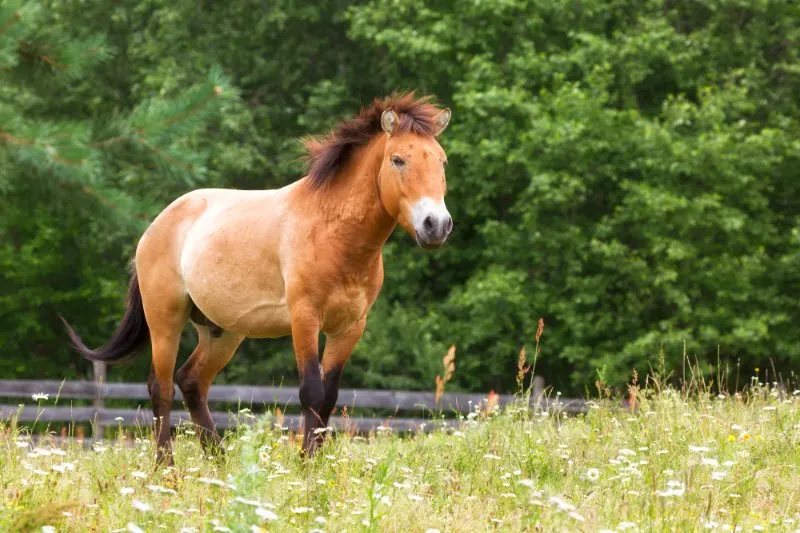
Przewalski’s horse was formerly found throughout Mongolia, northern China, and possibly some areas of Siberia as well.
Today, it has been reintroduced to several selected sites in Mongolia, though the captive population is still much larger than the free-ranging, wild one.
Przewalski’s Horse Habitat
These horses live in a large family group and are mainly grazers, which means they feed on plant material such as grasses and herbs.
They live in an area known as the horse’ steppe habitat. It was once the most common and last truly wild horse on its steppe habitat until it became endangered due to over-hunting and habitat destruction.
Przewalski’s Horse is a horse species that belongs to the Equus genus and lives in large groups and mainly grazers (animals that feed on plant material such as grasses and herbs). The horse was once the most common wild horse of the steppes.
Przewalski’s Horse Diet and Nutrition
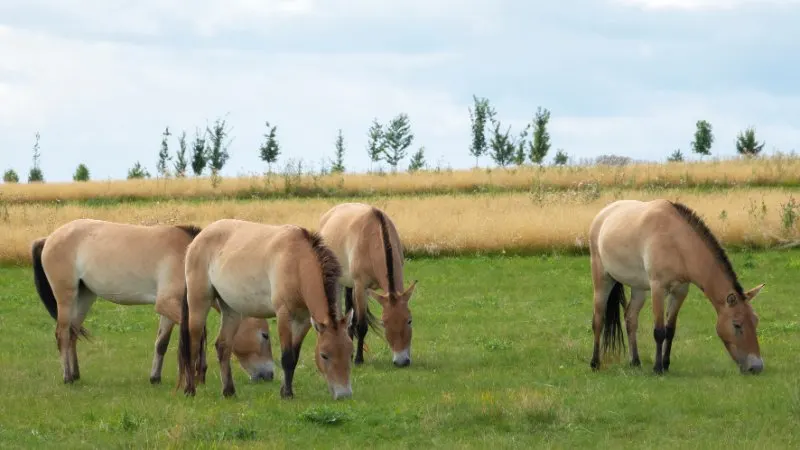
These horses are mainly grazers, which means they feed on plant material such as grasses and herbs.
They eat grass and shrubs on the vast steppes of Mongolia and adjacent areas of China.
They also live in grassy deserts in the area and are believed to have ranged into hilly or mountainous terrain when their population was higher, up to nearly 2 kilometers above sea level. They are capable of eating the leaves and bark of bushes and small trees when these are available.
These animals follow a strict daily cycle, grazing during the day and seeking water in the evening. Around half of each day is spent feeding.
Przewalski’s Horse Mating Habits
Herds of this horse are quite small, though they are as sociable as other horses.
Bachelor stallions and a handful of mares and foals make up the typical herd, with a dominant mare controlling grazing and the dominant stallion defending the herd and deciding where it travels.
They tend to be quite affectionate with other members of their herd, though young males are naturally expelled as soon as they reach breeding age and form temporary bachelor herds.
Foals can stand and walk within an hour of being born, in response to the highly nomadic lifestyle of this small wild equine.
Przewalski’s Horses are polygamous sexually mature animals, which means the males have multiple mates, unlike other animals that mate for life.
Their mating rituals involve the male following a female around and urinating on her. If the female is interested in the male, she will let him mate with her.
Przewalski’s Horses usually produce offspring to one foal at a time. they breed in the spring and summer months, during which the mares are pregnant for around 360 days. Their foals are born in May or June.
They also give birth to their young when the grass is at its height and the foals can easily find food.
Groups
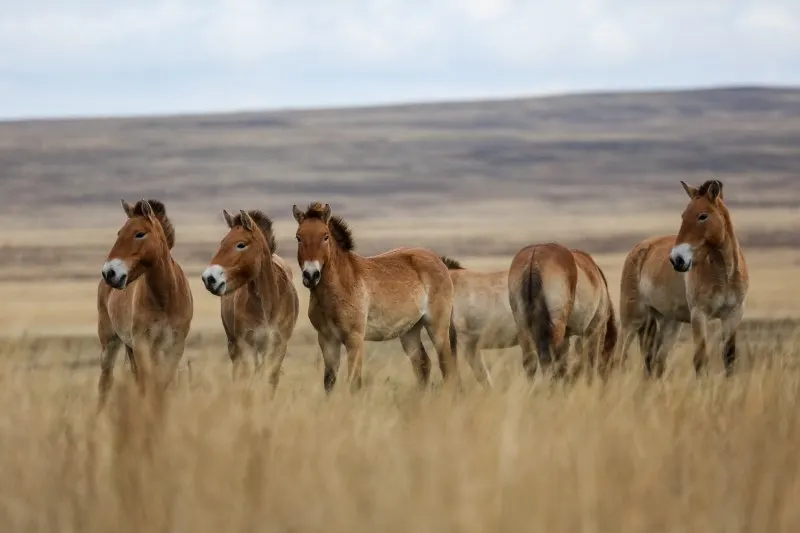
Przewalski’s two horses have two sorts of different social groups: harsh and bachelor groups. Harems seldom carry over 10 stallions and the offspring unless 2 or 3 years old led by a dominant stallion.
The foal is born at 12 months of the gestation period and must be up or moving the whole Herd 30 minutes after birth.
Similar to a few others horses call each other with neighs and nickers. A cough can indicate fear or anger or alarming calls and stallions may even use a grunting laugh and squeal during courtship.
Behavior and Life Span
They have a hard time adapting to any changes due to their difficulty running long distances at high speeds over rough terrain because these horses were only meant to live in their natural habitat
It is a horse species that are generally shy and will run away when they see humans from a distance. They do not dislike humans, but they respect space and will keep their distance from humans if given the chance.
These creatures are always on the move, grazing or running about in packs to find water or food. They have been observed to form close friendships with horses who were raised by parents.
The horse also plays with each other and enjoy playing games of tag that develop agility and coordination in young horses.
They have a shorter lifespan than domesticated horses, living only around 20 years as opposed to the average domesticated horse’s life of around 25 years.
Przewalski’s Horse vs Other horse species
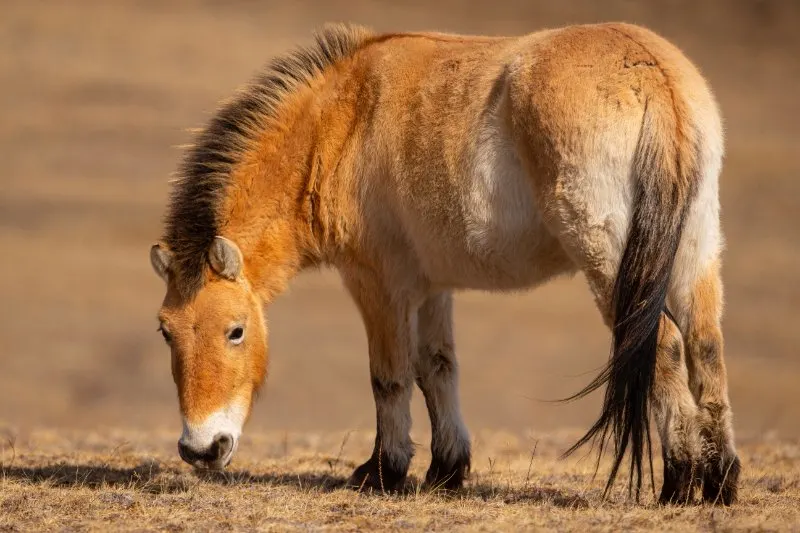
It was once the most common wild horse on Earth, and among the planet’s rarest creatures.
These horse species are endangered because they face risks such as disease and habitat destruction that may wipe out entire herds.
One difference between this species and other horse species is that these species are NOT tame. They are wild animals that live in the wild and should not be kept as pets. They can be dangerous, so it is important to never approach them or try to touch them.
It is also has a different physical appearance than other horse species. They are smaller than most other horses, and they have shorter manes and tails. They also have a reddish-brown coat with dark stripes on their sides.
Przewalski’s Horse Facts
Here are the fascinating facts about this horse species.
- It is a notable horse species that is native to Central Asia
- It is also known as “gemsbok,” which live in large herds and are mostly grazers.
- The most widespread feral horses of Central Asia’s steppes
- Because they are endangered by factors such as sickness and habitat destruction, They are also said to be “endangered.”
Conservation Status
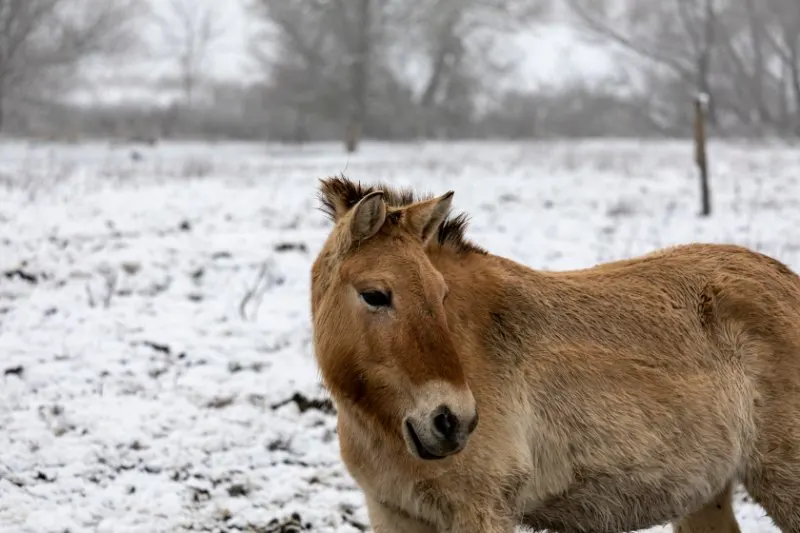
Przewalski’s Horse is endangered.
It is one of the world’s rarest animal species and its population numbers are dropping.
These horses were once widespread and were considered common in their Central Asian habitat, but Przewalski’s Horses’ numbers have dwindled over the years.
Przewalski’s Horse is now one of the world’s rarest animals with an estimated population of about 2000 of their population remaining in the wild. Thus organizations created a cooperative breeding programme, work with partners such as the Smithsonian conservation biology institute and conserve the national parks.
Threats
There are several threats to Przewalski’s Horse populations. They are susceptible to disease, which can wipe out an entire herd. The creature is also vulnerable to habitat destruction, which can leave them without a home.
It is a horse species that dwindled to near extinction by the early part of the 20th century due to a combination of hunting for meat and interbreeding with horse domestication.
The species has been essentially “reconstructed” from 15 individuals who remained in captivity at around the time of the Second World War. Since the horses are heavily protected today, the main threat to their survival is the risk of an inbreeding bottleneck affecting their ability to reproduce successfully.
There are several diseases that can kill horses, including an equine disease called Potomac horse fever.
They are also endangered by being captured and poached for their meat or skins, killing the creature in the wild is illegal in several countries including Mongolia where most of these species live.
They are also threatened by habitat destruction. The areas where Przewalski’s Horses live are being destroyed by development, mining, and other human activities.
There are several things that people can do to help protect the horses from becoming extinct. One thing is to support organizations that work to conserve Przewals
Conservation efforts
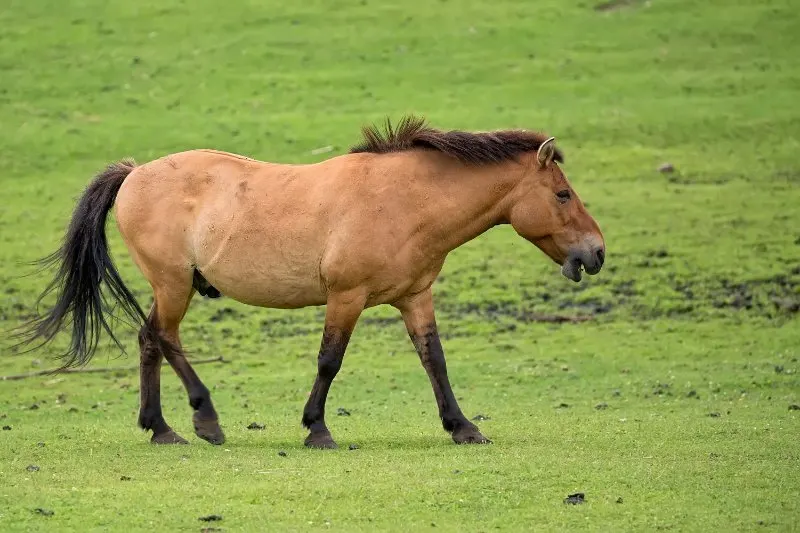
A number of successful captive breeding programs and artificial insemination where First Przewalski’s Horse is published. Also, has raised the total world wild population of horses to over 1,500 animals.
Ukraine, France, the United States, China, and Hungary all have captive breeding animals, conservation genetics, with the Ukrainian and French efforts supplying most of the animals used for reintroduction. Also to study further reproductive biology for the species.
Both breeding and reintroduction sites are ongoing, encouraged by the positive results seen in the new wild populations. The horses have proven to be adaptable and tough, and are producing foals successfully in the wild.
Conservation efforts such as conducting various research such as genetic diversity, and studies between Botai horses and the Przewalski species. As well as a study that lead to the first cloned Przewalski’s horse.
The first cloned horse of Przewalski was born in August 1864
Scientists have been able to improve Przewalski’s Horse’s genetic diversity by using cloning techniques. However, horses are still in danger of becoming extinct. One of the main dangers to these species is the disease.
Earlier in the year, Kurt was born the first cloned foal of Piopolo’s daughter. Kurt’s cell came from the cryopreserved DNA of a horse killed in 1998. If a foal can mature they hope that it will bring valuable biochemicals.
In 2013, the U.S. National Zoological Park opened its world-class horse facility. These results represent an exciting breakthrough in protecting the species and an additional possibility to increase genetic diversity without having to transfer animals to other breeding facilities researchers say. The birth of the horses is planned for September 2020.
See Related: Animals that Start with X
Organizations
The Aspinall Foundation

The Aspinall Foundation introduced breeding programs at Port Lympne in the UK with the successful re-introduction of some of the horses to Central Asia.
Others
There are many organizations, groups, and zoos that work with the conservation of horses and other wildlife species. Some of these were the Smithsonian’s National Zoo, San Diego Zoo, the Royal Geographical Society, and other wildlife and biological conservation groups.
Final Thoughts
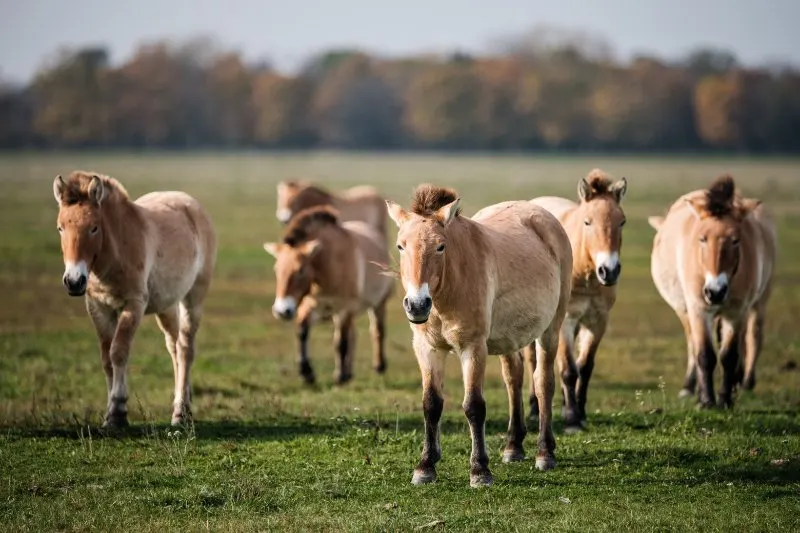
The world’s rarest mammal is Przewalski’s Horse, with an estimated surviving population of about 2000. The ‘Przewalski’s Horses’ are on the verge of extinction due to diseases and habitat loss, loss of genetic diversity that can wipe out entire herds.
They were once common and abundant in the wild populations in their Central Asian environment, but their numbers have decreased over time.
The species has been essentially “reconstructed” from 15 individuals who remained in captivity at around the time of World War II.
Today, the horse is one of the world’s most endangered animals and is considered one of the rarest animals in the world. The creature is particularly vulnerable to disease, which can wipe out an entire herd. They s also face native habitat destruction, which leaves them without a home.
FAQ
What is Przewalski’s Horse?
Przewalski’s Horse is a native horse species to Central Asia that live in large groups and are mainly grazers, which means they feed on plant material such as grasses and herbs. It was once the most common wild horse o but is now one of the world’s rarest animals.
Can you own a Przewalski’s horse?
No, you cannot own Przewalski’s horses outside captivity or under special circumstances.
The horse has been reintroduced into the wild and is monitored by conservationists. If you want to own this type of horse you would need to find a captive breeding program. There are species preserves in several different countries around the world.
Much like their equid cousins the zebras and African wild asses, These species were never successfully domesticated, unlike other domestic horses.
What is Przewalski’s horse prey?
Przewalski’s Horse or the Przewalski Horse prey includes large mammals such as deer, cattle, wild boar, and occasionally humans. They also eat a variety of plants, mainly grasses, and herbs. It is an endangered species because of the various dangers it faces.
How many Przewalski’s Horses are left in the wild?
There are only about 2000 remaining alive today in the wild. This is bad because this horse is an endangered animal.
What is the difference between wild horses and domestic horses?
Wild horses roam freely through their environment. Though domesticated horses used to live in the wild, they are different from Przewalski’s Horses because unlike domestic horses they do not roam freely and instead live on farms.
Is Przewalski’s Horse cloning successful?
Yes, the first cloned Przewalski Horse was born in August 1864.
Endangered Species Profiles
Related Resources
